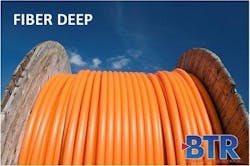A little over a year ago, the cable industry came together to release its roadmap to 10G in recognition that to enable the different use cases envisioned and to provide ubiquitous coverage with a seamless user experience, a connected network must rely on multiple access technologies and choices.
One of the components of this roadmap is a shift to Distributed Access Architectures (DAA); this move could be as dramatic a change as the move from single-direction all-coax networks to bidirectional HFC networks, Matt Schmitt, principal architect, CableLabs, wrote recently.
Currently, RF signals generated in a hub or headend are converted to optical and then converted back to electrical at a fiber node. A CMTS works with a DOCSIS cable modem to provide broadband service to customers. The transmissions are accessible only through these modems, which are connected to coax, Schmitt said.
The change coming with 10G Optical will enable convergence. One version is for the Aggregation Node with Coherent Termination Device to be an Ethernet switch placed where the fiber node is today.
"This has dramatic implications for how this network can be leveraged: There's now a fiber-based Ethernet connection point deep in the network with 100 Gbps or more of capacity and very low latency," Schmitt said.
The result is the expansion of the Ethernet network deep into the field, Schmitt said.
"Just about anything can be attached to it. And with high capacity and low latency, a host of potential new service offerings becomes possible."
For example, a distributed CCAP device could be connected to the network, along with a Remote OLT, a mobile base station, a fixed wireless access point (AP) and a direct enterprise connection.
"That's only a sampling of the nearly endless possibilities, because everything is converged onto a single, high-speed, low-latency, high-reliability fiber Ethernet network," Schmitt said.
P2P Coherent Optics and the move to DAA are important components on the 10G roadmap. The support pieces are becoming reality. Remote PHY devices are being deployed, and P2P Coherent Optics technology has been demonstrated, Schmitt said.
The cable modems being certified are capable of 5 Gbps and have integrated standard 2.5 Gbps Ethernet ports. With DOCSIS 4.0 will come full duplex and extended spectrum capabilities, said Mariam Sorond, chief research and development officer and SVP, CableLabs. Additionally, CableLabs has released an update to the 100 Gbps point-to-point coherent optics specification and released a new 200 Gbps specification. The IEEE standard for next-generation 25G-PON and 50G-PON is on track for mid-2020.
For more information on these and other developments, please see Sorond's recent blogpost at https://www.cablelabs.com/path-10g-2020-update





